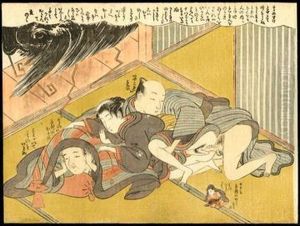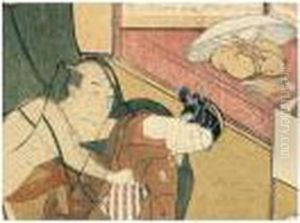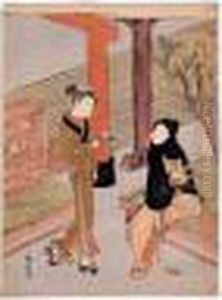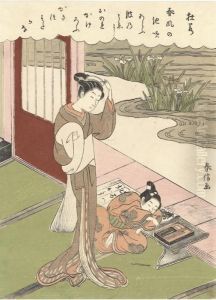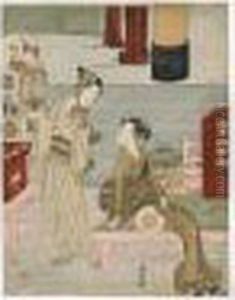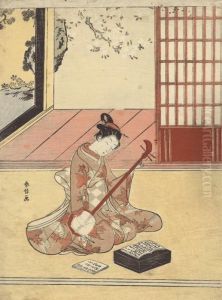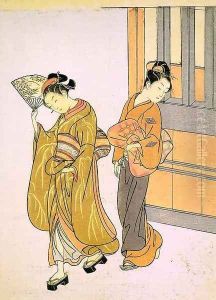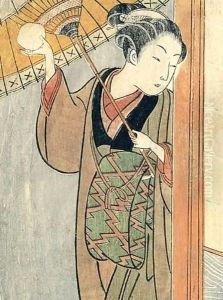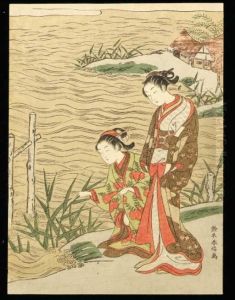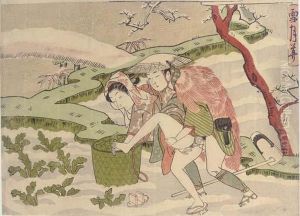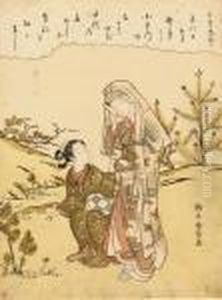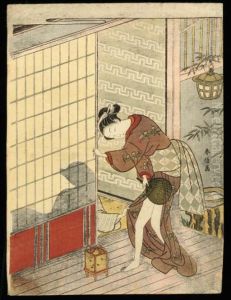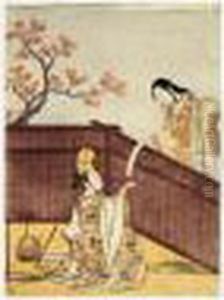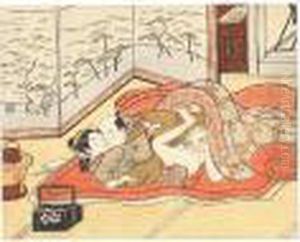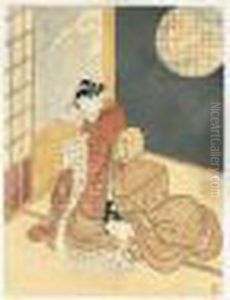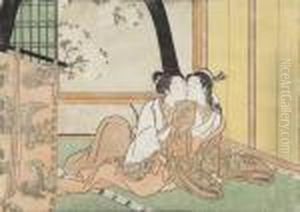Suzuki Harunobu Paintings
Suzuki Harunobu was a Japanese woodblock print artist, known as a master of the ukiyo-e style of printmaking. Born in 1725, Harunobu was active during the Edo period in Japan, a time when the country was under the rule of the Tokugawa shogunate and experiencing a flourishing of urban culture in cities like Edo (modern-day Tokyo), Osaka, and Kyoto.
Harunobu is widely recognized for his innovation in multi-colored printing, known as 'nishiki-e,' which literally means 'brocade pictures.' Prior to Harunobu, most woodblock prints were limited to two or three colors. Around 1765, Harunobu developed a technique that allowed for the use of many colors on a single print, drastically increasing the visual appeal and complexity of the prints.
His subjects often included beautiful women, kabuki actors, and scenes from everyday life, as well as classical literature and poetry. Harunobu's prints are characterized by their delicate lines, subtle use of color, and poetic atmosphere. He was also known for his bijin-ga, or pictures of beautiful women, which were not just idealized images but often depicted women in the midst of daily activities, imbuing the prints with a sense of intimacy and realism.
One of Harunobu's most significant contributions to Japanese art was his ability to blend the traditional with the modern. He took inspiration from classical Japanese literature and art, but his work was innovative in its format and style, reflecting the dynamic culture of his time. Harunobu's prints were not only popular in Japan, but they have also gained international acclaim and have had a lasting impact on the development of ukiyo-e and Japanese art as a whole.
Despite his profound influence, Harunobu's life was relatively short; he died in 1770 at the age of 45. Nevertheless, his legacy has endured, and today he is remembered as one of the great masters of Japanese woodblock printing.







